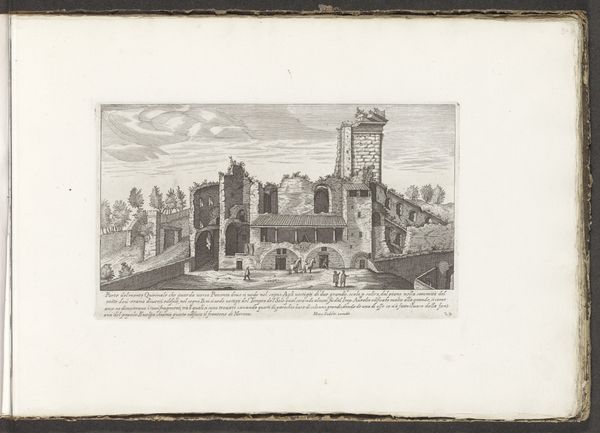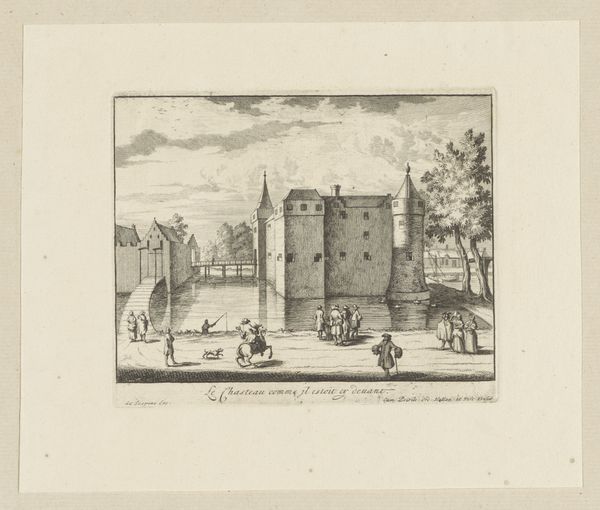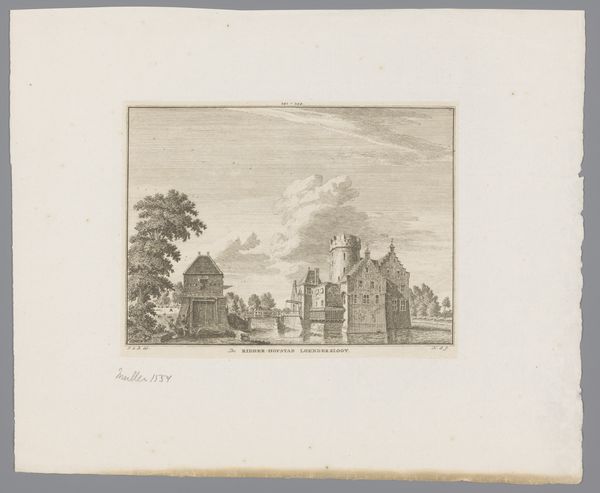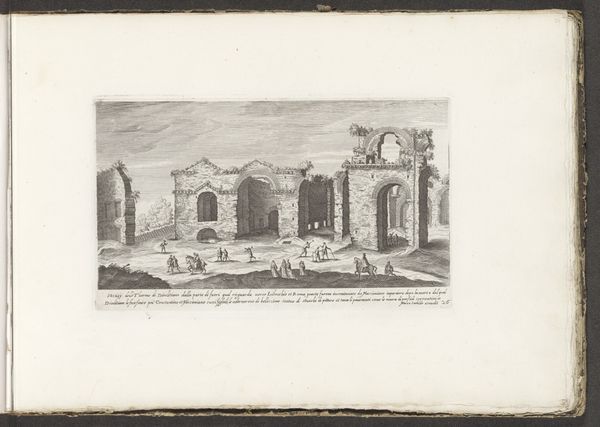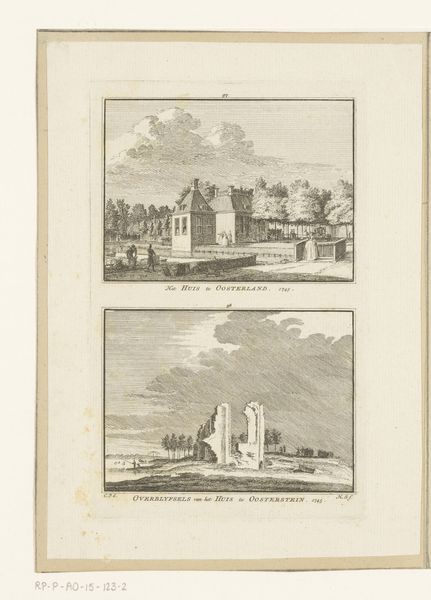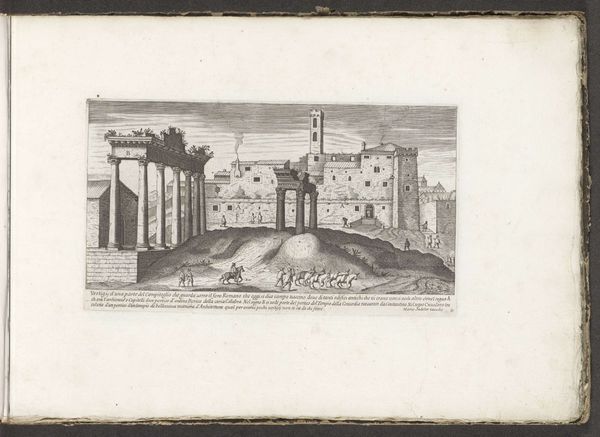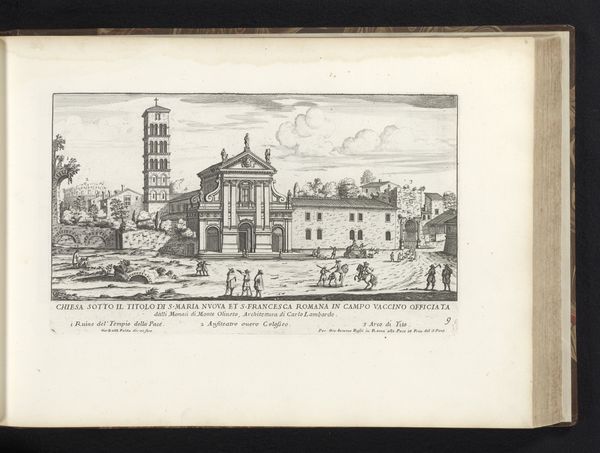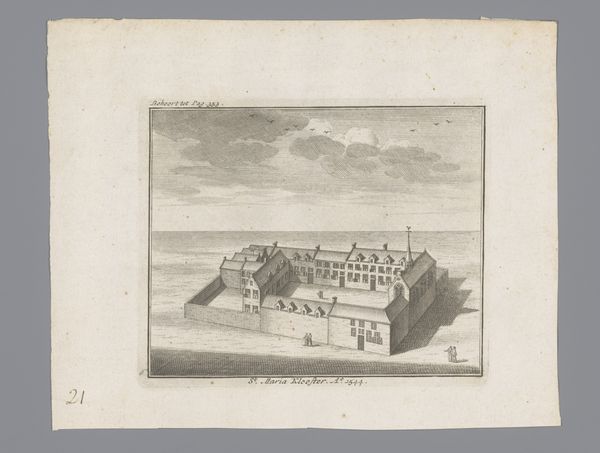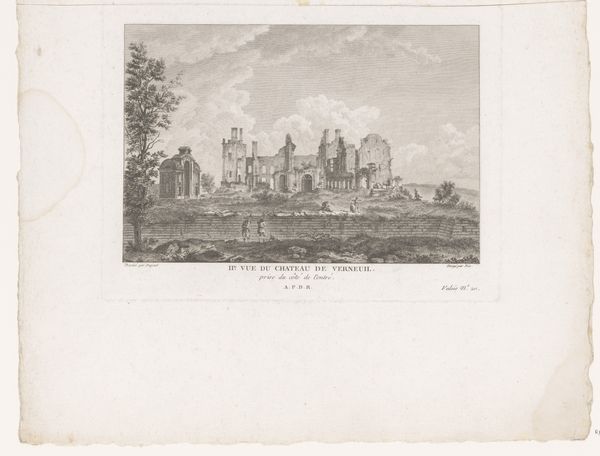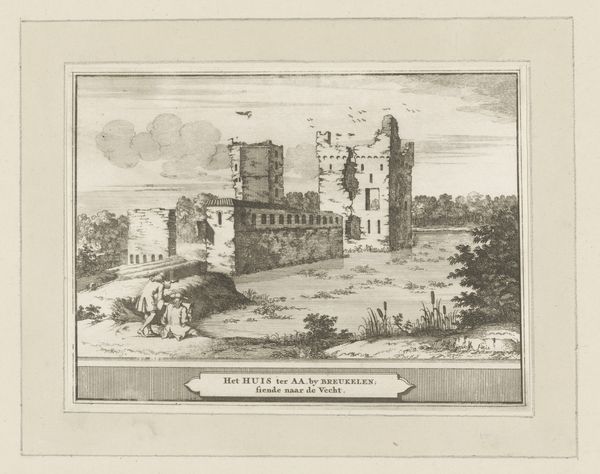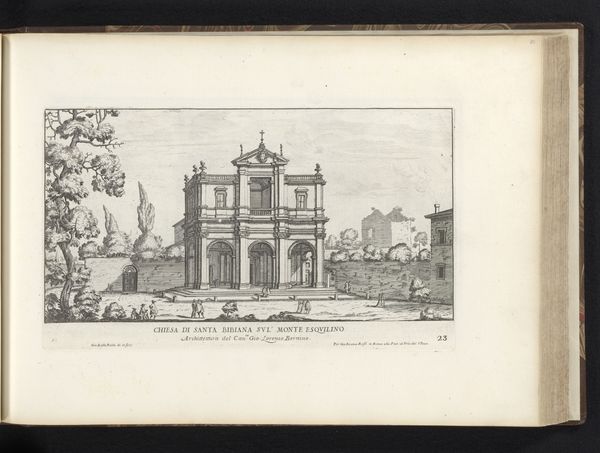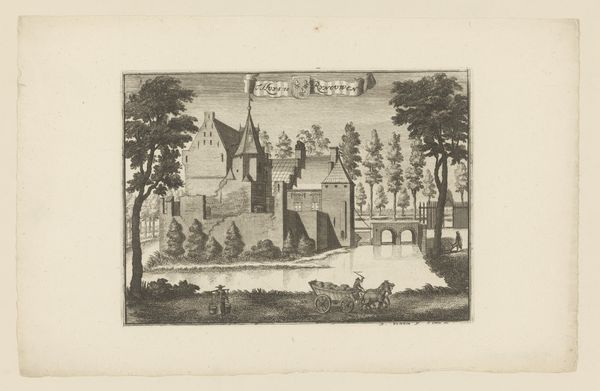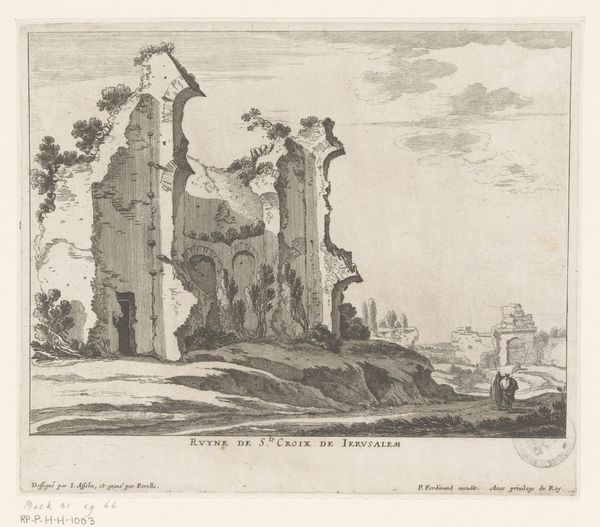
print, engraving
#
aged paper
#
toned paper
#
baroque
#
ink paper printed
# print
#
old engraving style
#
sketch book
#
landscape
#
personal sketchbook
#
pen-ink sketch
#
pen and pencil
#
pen work
#
cityscape
#
sketchbook art
#
engraving
Dimensions: height 170 mm, width 284 mm
Copyright: Rijks Museum: Open Domain
Curator: Today, we’re looking at a 1665 engraving by Giovanni Battista Falda titled, "The Pyramid of Cestius and the Porta San Paolo in Rome.” It’s held here at the Rijksmuseum. Editor: My initial impression is one of surprising geometric starkness. That pyramid against the more organic, crumbling structures—it creates such a striking contrast! Curator: It's interesting that you point out that contrast, given Falda's interest in portraying Rome during a period of intense urban transformation. The pyramid, an ancient monument, exists alongside structures being reshaped under papal authority. Editor: Absolutely. Look at the rigorous lines of the pyramid itself—the engraver’s mark-making emphasizes this incredibly solid form. Notice how this rigidity differs from the rougher textures of the ancient wall? Curator: Indeed. Pope Alexander VII had commissioned restorations during this era, aiming to visually link the papacy with Rome's imperial past. The presence of both the Pyramid of Cestius, an ancient Roman tomb, and the city gate is very strategic. Editor: How so? Curator: Well, visually, the juxtaposition does imply the church’s connection to this imperial lineage. The pyramid functions as a claim to ancient authority for the papacy, situating the Church within a long history of Roman power. Falda’s work needs to be viewed within the cultural program initiated by Alexander. Editor: I see that so much of what’s emphasized and included serves this purpose, especially rendering that ancient structure as something geometric, stark, and almost divorced from any decay, at least comparatively. This engraving acts as a visual justification. Curator: Precisely. And Falda’s position in this historical and political setting would necessarily impact the print's composition, and even the use of space and architectural representation. Editor: Yes, and acknowledging that interplay, rather than just the forms presented to us, enriches our understanding and really enhances the experience. Curator: I agree. It moves beyond aesthetics to reveal this print's role in constructing a historical narrative about papal authority and urban identity.
Comments
No comments
Be the first to comment and join the conversation on the ultimate creative platform.
